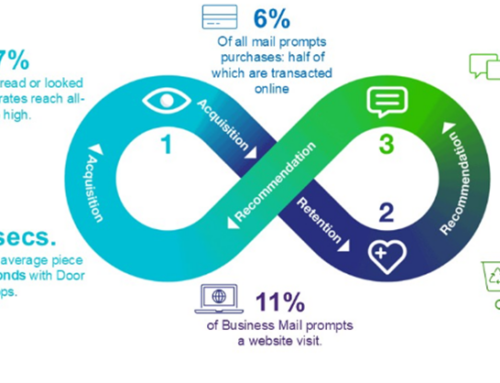Martin Rides writes for Decision Marketing about the role of mail moving forward into the new year. You can read the article here or below
Brexit, Covid, supply chain chaos, cost of living crisis, economic freefall, postal strikes, train strikes, nurses strikes, economic freefall, worst and longest predicted recession… yep, the country is royally screwed and teetering on a knife edge.
There’s no dressing it up, this year has been a shocker and next year is going to be even tougher for the marketing industry. Everyone is battening down the hatches and putting survival plans into place. Yet, there is one small glimmer of light…
The resurgence of direct mail as a legitimate and effective marketing channel.
If nothing else, the pandemic served to remind the Brits that they love their letterboxes. They love the tangibility of mail and they actually love to hear from their favourite brands through the medium of a letter.
In a staggering about-turn, direct mail is now one of the most trusted forms of marketing communications. More trusted than email, more trusted than TV, more trusted than social.
Rewind 15 years and direct mail (or junk mail as it was then known) was the enemy, plaguing people’s doormats and responsible for all manner of ills from mass deforestation to out-of-control consumer debt.
Yet, with the introduction of better data practices and sustainable mail solutions it has had a revival of fortunes and increasingly marketers are including it in their marketing mix.
Charity, retail, travel, financial services, utilities and the public sector have traditionally been proponents of the medium, but they are being joined by education, B2B companies, automotive, healthcare and interestingly, pureplay digital brands.
Anecdotally, the past six months has seen more non-users of the medium testing its effectiveness than ever before. Strikes, notwithstanding, Royal Mail is doing its bit by providing attractive incentives for new and existing users alike, which increases cost efficiency. This is necessary as with soaring paper prices the cost of direct mail is rising faster than the cost of other media.
And as we have seen time and time again, when coffers are squeezed the budget by default gets put towards digital due to the perception of its value for money. However, the ROI of digital is shrinking. As increasing numbers of brands pour money into web optimisation to bolster conversion rate optimisation the incremental returns are diminishing, competition for keywords is fierce, hiking up prices and click rates are falling due to digital fatigue.
Despite the bleak economic outlook, the latest Bellwether shows that marketing spend is predicted to remain stable into the first quarter of next year. Whilst marketing is often the first thing to be cut in the face of a recession, the message of marketing your way through the troubles seems to be getting through, for the time being anyway.
And given that organisations will be wanting to shore up their relationships with their customers, and direct mail is proven to be one of the best channels at retention, there is at least a glimmer of hope for the industry.
To turn that glimmer into a full-blown opportunity, it is critical that the industry continues to protect the channel by ensuring it remains well targeted and prevent it falling back into the bad old ways.
Martin Rides is managing director of The Software Bureau





